Over one hundred people gathered in Zoetermeer, the Netherlands, to celebrate the tenth anniversary of Next Generation Growing (NGG), a sustainable way of growing inside the greenhouse. NGG is consistantly changing, as the ideas around sustainability shift, the afternoon-filled program offered those new to NGG and those familiar with it a lot of information about how to grow sustainably.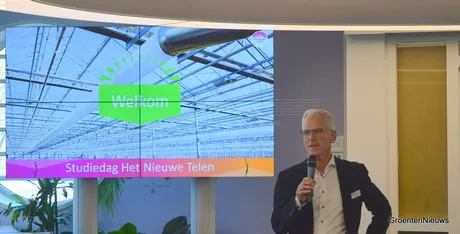
Aat Dijkshoorn
2/3 gas saving
First there was a plenary section, in which Aat Dijkshoorn of Glastuinbouw Nederland started, with a retrospective and forward-looking perspective and after that a large number of courses to choose from. But not before a large number of familiar faces were given the floor by day-chairman Eric Poot of Wageningen University & Research (WUR), after he had taken over the microphone from Aat.
Eric briefly explained where the term, more than just 'a nice marketing term' according to Eric, came from. A little over ten years ago, the years 2007-2008, commercials about The New Driving were circulating. The goal: saving energy and at the same time saving some money.
The same also applies to the Next Generation Growing, where the focus was (and is) primarily on the plant and after that on the technology that can help with that. Techniques, but especially a corresponding way of growing, with which Aad Zuijderwijk of gerbera nursery Zuijderwijk & Witzier managed to achieve a whopping 2/3 gas saving. All this in close consultation with Jan Voogt and Peter van Weel, both at the time still at WUR. Both men were also at the beginning of NGG.
Screens on eradiation
With the vegetables, Vereijken Kwekerijen was one of the first to get started with the new way of growing. Eric Vereijken was shown in a video, in which he said that new construction was a great opportunity for tomato growers for extra screening and also to dehumidify. Lately, screens have been further optimized, by screening on eradiation.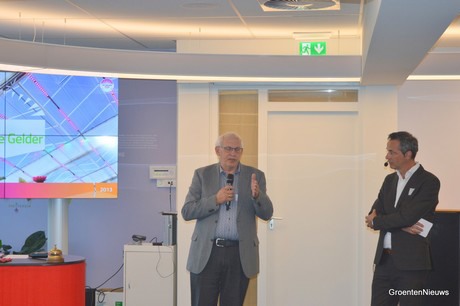
Arie de Gelder, interviewed by Eric Poot
Arie de Gelder, co-author of the report that formed the basis of NGG, also pointed to screening. He also pointed out that for NGG the minimum pipe temperature was no longer used. Only heating to meet the heat demand is the motto.
No compromises
But is NGG completed after ten years? No, certainly not, everyone was convinced of that. For about ninety percent of Dutch greenhouse crops, it is applicable and the developments are continuing. Johan Bloothoofd of Royal Van Zanten, for example, told about successes achieved with keeping CO2 inside the greenhouse, while alstroemeria naturally requires a colder greenhouse climate and until recently still needed 'windows open'.
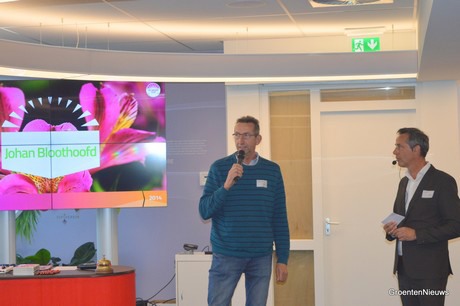
Johan Bloothoofd
A lot of screening, it often came back during the plenary part and so Ton Habraken from screen supplier Ludvig Svensson also was given the floor. What does the company do with that extra focus on screens? Continue to further develop, but now without making any compromises. It is no longer both light transmittance and insulating effect, but one of the two when making screens.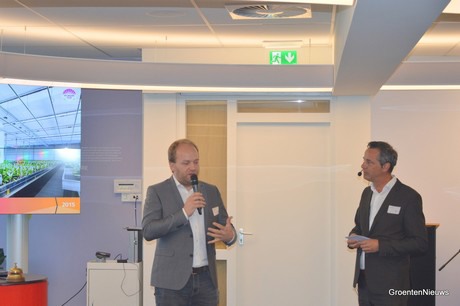
Ton Habraken
Export of funny words
In the meantime, a second video clip was started featuring Patrick de Craen from Family Fresh Farms. Yes, indeed, an Australian cultivation company, to which Patrick, previously snack cucumber grower in the Netherlands, exported the NGG knowledge. The benefit for him? When he is in the Netherlands, he can speak in the same NGG language with the staff there - a language of data instead of gut feeling.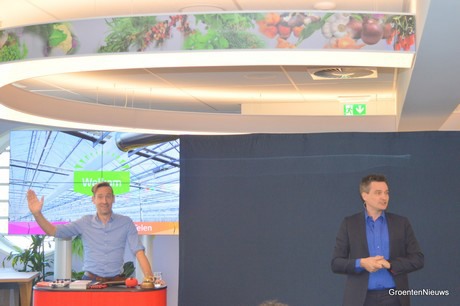
Joop and Pepijn gave an introduction to the art of changed thinking
But what is part of that NGG language, this is what Joop and Pepijn wanted to know. They gave a clinic in changed thinking, but not before they got the room laughing when successively they mentioned minimum pipe temperature, fluid deficit, humidity gap and early night increase as most entertaining.
The chuckle about the terms that could have a double meaning for the layman was followed by a serious message, namely: sometimes just say 'yes' instead of 'yes, but', because that brings results.
Floating ideas
After the course, everyone was completely 'opened' to new knowledge and change, the latter sometimes preventing the application of NGG. Finally, another round concerning the future, in which various ideas were floated around. What about successively removing CO2 from the outside air, more attention to the root environment, NGG as a tool/solution to reduce crop protection use and more focus on plant stress with attention to the opening and closing of stomata.
And then during the courses a lot more tests, results, but especially floating ideas. "Haha, I heard a lot of questions," one of the attending growers summarized laughingly.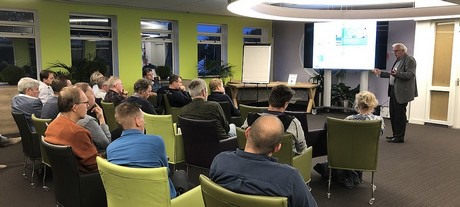
One of the courses, photo credits: Roger Abbenhuijs
Questions to which answers will be found. To that end, keeping an eye on www.kasalsenergiebron.nl is a must and we will, of course, continue to follow developments closely.
